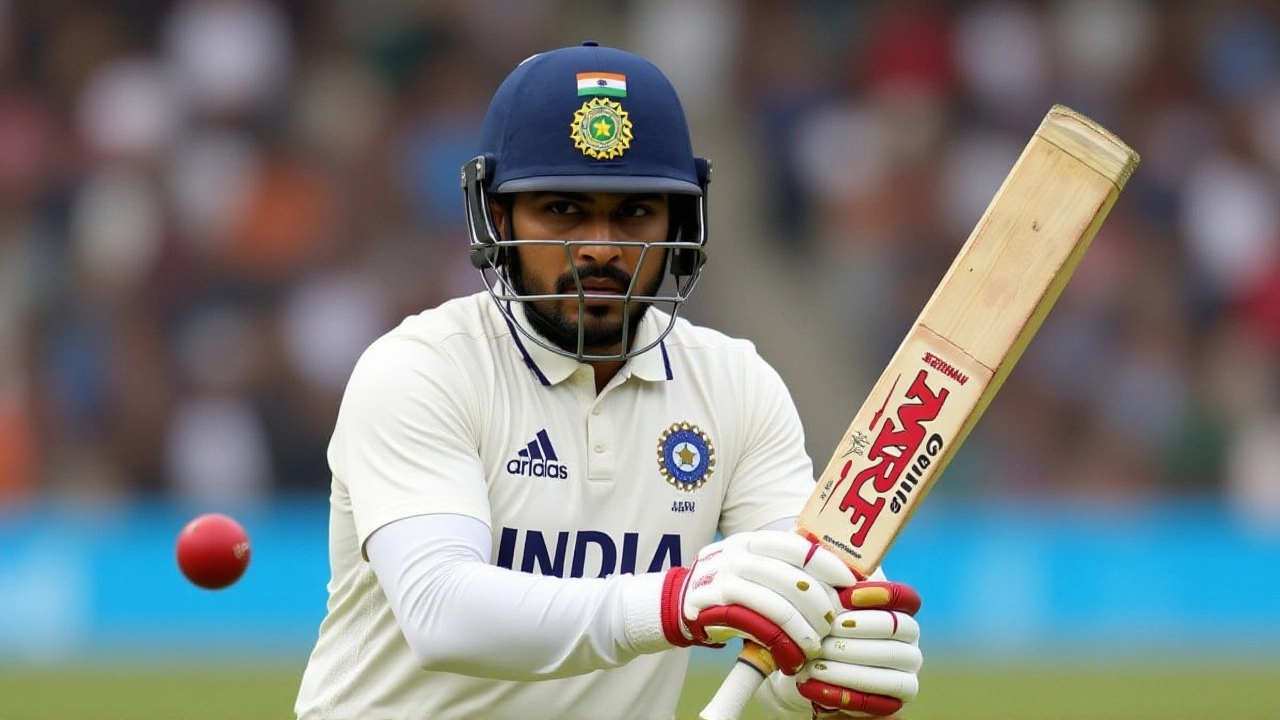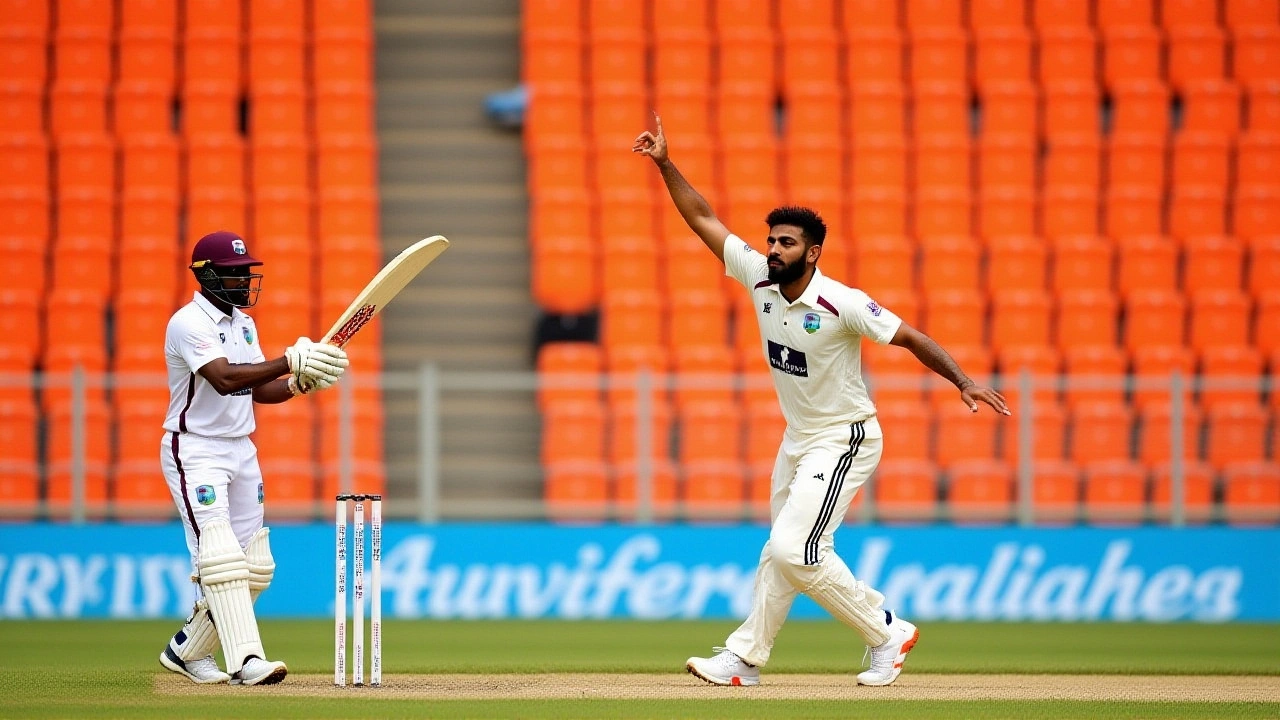When Mohammed Siraj and Jasprit Bumrah ripped through the West Indies batting line‑up on October 2, 2025, the yawning emptiness of Narendra Modi Stadium in Ahmedabad stole the headlines. The clash – officially India vs West Indies 1st TestNarendra Modi Stadium – was supposed to showcase the sport’s longest format, yet the stands looked more like a ghost town than a cricket cathedral. Even Darren Sammy, the West Indies head coach, could not hide his frustration as his side folded for 162, and the silence amplified every delivery.
Why Ahmedabad? The promise and the pitfalls
The Modi Stadium boasts a colossal 132,000‑seat capacity, making it the world’s biggest cricket venue. Its sleek roofs and state‑of‑the‑art floodlights have hosted World Cup finals and IPL spectacles, yet its suitability for a five‑day Test has long been questioned. Critics argue that a ground built for the flash of T20s and the roar of crowds at limited‑overs events struggles to generate the intimate atmosphere Test purists cherish. The Board of Control for Cricket in India (BCCI) defended the choice, citing a desire to spread the game across the country’s diverse states – a policy that now has 18 different venues on its rotation list.
Bowling brilliance amid barren stands
Despite the visual vacuum, the on‑field drama was anything but dull. Siraj finished with figures of 4 for 40, turning the ball sharply on the grassy strip, while Bumrah claimed 3 for 42, extracting low bounce that left the visitors scrambling. Meanwhile, Kuldeep Yadav produced a textbook delivery that saw Shai Hope mis‑judge a lofted drive, sending the ball into the foot‑wicket. The wicket‑keeper’s jubilant fist pump was one of the few moments that cut through the blankness. Even with such performances, the crowd’s muted reaction underscored a growing disconnect between Indian Test cricket’s quality and its public appeal.
Social media backlash and the BCCI’s rotating policy
Twitter (now X) lit up within minutes. One fan wrote, “If you have to play a lower‑tier team, schedule the game at a venue that loves Test cricket. Chennai or Kolkata would have been packed.” A chorus of similar comments followed, many pointing to the absence of marquee names like Virat Kohli and Rohit Sharma from the squad. Their star power, the argument went, often turns a half‑empty stadium into a throng.
The debate revives former captain Kohli’s 2019 proposal for “five fixed Test centres” – Mumbai, Delhi, Chennai, Kolkata and Bengaluru – as a way to guarantee packed houses and predictable pitch conditions. England and Australia, by contrast, limit their Tests to nine and ten venues respectively, a strategy that consistently yields higher attendance and stronger home‑ground advantage.
Comparisons with England and Australia
Lord’s, Old Trafford, The Oval, Adelaide Oval and the Gabba have become synonymous with Test cricket because they host matches year after year. Fans know the ground’s quirks, the media can build narratives around them, and broadcasters can sell the story as a tradition. India's rotating model, while inclusive, dilutes that sense of heritage. The empty sections at the Modi Stadium echo a similar scene in 2018 when a Test at Hyderabad’s Rajiv Gandhi International Cricket Stadium drew merely 12,000 fans for a match against Sri Lanka.
Future of Test cricket venues in India
What comes next? The BCCI has hinted at a possible reshuffle after the West Indies series, but no concrete timeline has emerged. Some insiders suggest a hybrid approach: keep the rotating system for ODIs and T20Is, while designating a core of five or six venues for Tests. Others argue that fan engagement must start at the grassroots, with schools and clubs promoting the five‑day format as a narrative of endurance and skill.
One thing is clear: the visual of a 132,000‑seat arena echoing with the sound of a lone ball hitting the stumps is a stark reminder that cricket’s longest form needs more than just world‑class facilities – it needs a crowd that cares.
Key facts
- Match: India vs West Indies – 1st Test, October 2‑6, 2025
- Venue: Narendra Modi Stadium, Ahmedabad (capacity 132,000)
- India bowling figures: Siraj 4/40, Bumrah 3/42, Kuldeep Yadav 1/28
- West Indies total: 162 all out in 44.1 overs
- Social media sentiment: >2,000 tweets criticizing venue choice within 24 hours

Frequently Asked Questions
Why did the BCCI choose Ahmedabad for a Test against the West Indies?
The board’s rotating‑venue policy aims to give every state association a share of marquee matches, and the Modi Stadium’s modern infrastructure was seen as a showcase for Indian cricket, even if the opponent’s draw‑power was modest.
How does the attendance compare with previous Tests in India?
Attendance at the first day was estimated at 15,000, far below the 60,000‑plus figures recorded at venues like Eden Gardens for high‑profile matches, and similar to the low turn‑out seen in Hyderabad in 2018.
What impact could the empty stands have on the players?
Players often feed off crowd energy; a barren stadium can make it harder to maintain intensity over five days, though seasoned pros like Siraj and Bumrah have said they focus on personal goals regardless of the audience size.
Is India likely to reduce the number of Test venues?
While no official decision has been made, several former captains and analysts have urged the BCCI to adopt a core‑venue model similar to England’s, citing better crowd turn‑out and stronger home‑ground advantage.
Could the absence of stars like Virat Kohli and Rohit Sharma be the main reason for low turnout?
Star power definitely influences attendance, but experts note that consistent scheduling, marketing, and building a Test‑culture in smaller cities are equally vital for drawing crowds.
